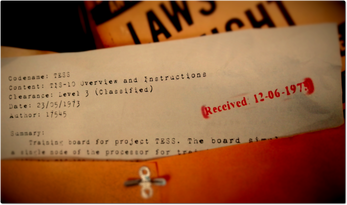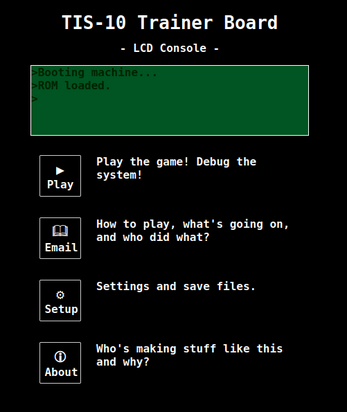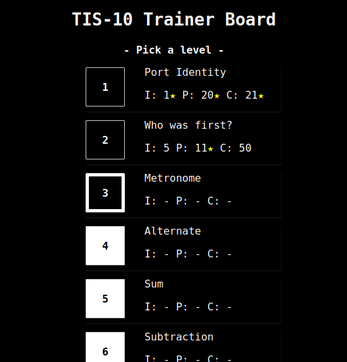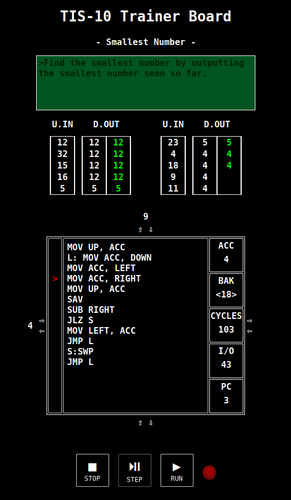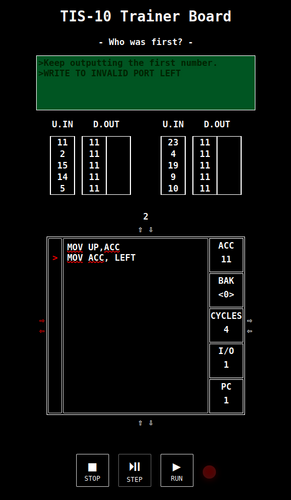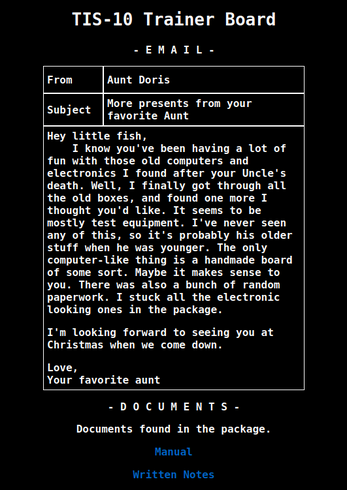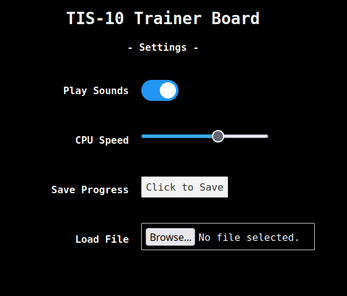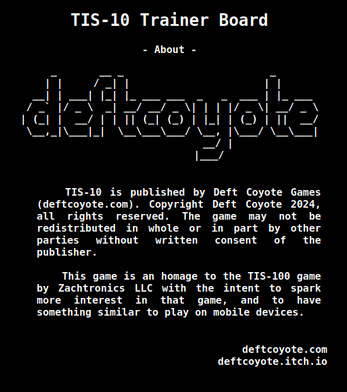
TIS-10
The TIS-10 puzzle game is a mobile/browser game related (unofficially) to the Zachtronics TIS-100 game and set within the same mythos. Although it is not an official crossover, the game introduces the same basic assembly language and harkens back to the early 70s with prototype development and training boards aimed at demonstrating some of the capabilities of a chip as well as letting developers debug and test code while the machine is being manufactured.
Although intended to be in the same universe, this is a standalone game with simpler puzzles and the equivalent of a single core that can run only 16 lines of code. The quality of a solution are based the following metrics: the number of instructions needed, the number of times I/O ports are used, and the number of clock cycles the machine runs.
Story: The machine was found by your Aunt and mailed to you months after the TIS-100 along with a few papers. The manual turns out to be a classified memo from 1975!
Have fun hacking!
Game Instructions
The classified memo that serves as the manual describes the available commands, but little else. You are trying to debug the machine and understand how it operates by working through a set of debugging tasks. To pass the task you must input and output the correct data from/to the correct ports. These are the testing parameters listed above the code section.
A few notes to get you started.
- The level selection screen shows stats for the number of instruction lines (I), the number of I/O port uses (P), and the number of CPU cycles (C).
- If your solution is really good in one of the stats, a yellow star will show up next to it. If you do better than expected, a purple star shows up!
- Lines with only a comment, space, or label will stall the machine (by design).
- You can save all progress and reload it later in the settings.
- The title bar is a button to go back to the main menu (needed to leave a puzzle).
- Using the Step button will only let you step and the Run button won't work until you stop the machine and use Run.
- The Ports not being used can 'hold' a variable since the machine assumes they are read there.
- There is an arrow line pointer next to the code to indicate which line is about to be executed.
- A dash in input means no input will be given.
Please send feedback for any other issues with the game, things that are unclear, suggested puzzles, or better optimal solutions!
| Status | In development |
| Platforms | HTML5 |
| Author | deftcoyote |
| Genre | Puzzle |
| Made with | Audacity |
| Tags | 8-Bit, assembly, fantasy-console, tess, tis, vintage |
Download
Click download now to get access to the following files:
Development log
- Defining what a "good" solution meansApr 02, 2024
- A package just arrivedMar 26, 2024
